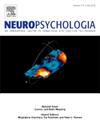Autonomic, neurodevelopmental, and early adversity correlates of acquired aphantasia
IF 2
3区 心理学
Q3 BEHAVIORAL SCIENCES
引用次数: 0
Abstract
Aphantasia (the inability to voluntarily generate mental imagery) has traditionally been studied as a congenital or neurological condition. However, historical and clinical reports also implicate affective and stress-related factors in the onset of imagery loss, which are themselves associated with disrupted interoception and autonomic nervous system dysfunction. To investigate these links, we surveyed individuals with self-identified acquired aphantasia (N = 59) using structured questions and validated questionnaires assessing early adversity (Childhood Trauma Questionnaire), anxiety symptoms (GAD-7), autonomic reactivity (Body Perception Questionnaire–Short Form; Atrial Fibrillation Symptoms Questionnaire), and neurodevelopmental traits (AQ-10, ASRS-6). 62 % of participants reported psychological triggers for their aphantasia, 41 % cited neurological or physiological events, and 30 % identified pharmacological factors. Nearly half of the participants described a combination of these influences, with psychological factors frequently co-occurring with medication use or physical events, suggesting that acquired aphantasia may oftenhave multifactorial origins rather than a single isolated cause. Compared to typical imagers, individuals with acquired aphantasia reported significantly higher levels of childhood trauma and increased supra-diaphragmatic autonomic reactivity, as well as significantly elevated scores on measures of ADHD and autism. These findings suggest that acquired aphantasia may not only follow neurological injury but can also emerge in the context of affective conditions shaped by early adversity and neurodevelopmental vulnerability. Affective disturbances may contribute to imagery loss by altering the subjective experience of autonomic signals and disrupting the integration of bodily, emotional, and cognitive information required to generate vivid mental representations. In conclusion, these results support an affective-autonomic pathway to acquired aphantasia.
自主、神经发育和早期逆境与获得性失语症的关系。
幻觉症(无法自主产生心理意象)传统上被认为是一种先天性或神经系统疾病。然而,历史和临床报告也表明,情感和压力相关因素与意象丧失的发生有关,这些因素本身与内感觉中断和自主神经系统功能障碍有关。为了研究这些联系,我们使用结构化问题和有效问卷调查了自认为获得性缺失症的个体(N = 59),评估早期逆境(儿童创伤问卷)、焦虑症状(GAD-7)、自主神经反应(身体感知问卷-短表;心房颤动症状问卷)和神经发育特征(AQ-10, ASRS-6)。62%的参与者报告了心理诱因,41%的人提到了神经或生理事件,30%的人认为是药理学因素。值得注意的是,近一半的参与者描述了这些影响的组合,心理因素经常与药物使用或身体事件同时发生,这表明获得性缺失症可能通常是由多因素相互作用引起的,而不是单一的孤立原因。与典型的成像者相比,获得性缺失症患者报告的童年创伤水平明显更高,膈上自主神经反应性增加,多动症和自闭症的得分也显著提高。这些发现表明,获得性缺失症可能不仅是神经损伤所致,也可能出现在早期逆境和神经发育脆弱性形成的情感条件下。情感障碍可能通过改变自主神经信号的主观体验,破坏生成生动心理表征所需的身体、情感和认知信息的整合,从而导致图像丧失。总之,这些结果支持获得性缺失的情感-自主通路。
本文章由计算机程序翻译,如有差异,请以英文原文为准。
求助全文
约1分钟内获得全文
求助全文
来源期刊

Neuropsychologia
医学-行为科学
CiteScore
5.10
自引率
3.80%
发文量
228
审稿时长
4 months
期刊介绍:
Neuropsychologia is an international interdisciplinary journal devoted to experimental and theoretical contributions that advance understanding of human cognition and behavior from a neuroscience perspective. The journal will consider for publication studies that link brain function with cognitive processes, including attention and awareness, action and motor control, executive functions and cognitive control, memory, language, and emotion and social cognition.
 求助内容:
求助内容: 应助结果提醒方式:
应助结果提醒方式:


